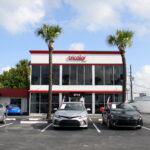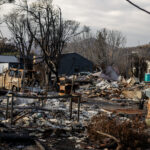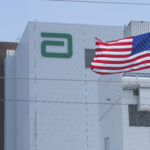BP Plc and its Gulf of Mexico oil well partners traded blame Wednesday after an internal BP investigation tried to downplay the company’s role in the world’s biggest offshore spill.
The 193-page BP report offered a preview of how the British oil giant plans to vigorously defend itself against lawsuits arising from the disaster and any charges of gross negligence, which carry fines potentially in excess of $20 billion.
BP accepted some responsibility for the disaster but pointed the finger at what it said were major failures by Transocean Ltd, the operator of the ill-fated Deepwater Horizon oil rig, and oil services company Halliburton, which cemented the deep-sea well that ruptured on April 20.
The report drew fire from a prominent U.S. lawmaker who accused BP of trying to minimize its role in the disaster.
Transocean called it a “self-serving” attempt by BP to escape responsibility for its “fatally flawed” well design, while Halliburton said the report was filled with inaccuracies.
The report threatened to reignite public anger over the massive spill, which caused an environmental catastrophe along the U.S. Gulf Coast, devastated tourism and fishing in the area and damaged President Barack Obama’s popularity.
Obama’s spokesman, Robert Gibbs, declined to comment on BP’s findings and said the government was still investigating the disaster to “find out what went wrong and hold those responsible accountable for the damage that’s been done.”
COMPLEX SERIES OF FAILURES
BP investigators were unable to identify any single action or inaction that caused the Deepwater Horizon rig to blow up on April 20, killing 11 workers, after the Macondo well ruptured. “Rather, a complex and interlinked series of mechanical failures, human judgments, engineering design, operational implementation and team interfaces came together to allow the initiation and escalation of the accident,” the report said.
“Multiple companies, work teams and circumstances were involved over time.”
Investors had been eagerly awaiting the report to find out whether BP would be able to share the potential costs of the spill — estimated by some analysts to exceed $50 billion.
Citigroup analysts said in a research note that BP’s report “appears to support the case for no negligence,” but they acknowledged that the findings of the internal investigation were unlikely to be accepted as objective.
BP shares trading in New York closed up 3.2 percent, while shares of Transocean were 1.3 percent higher and those of Halliburton were up 1.2 percent.
Standard & Poor’s downgraded Transocean’s rating to BBB from BBB-plus, saying the Swiss-based company faced uncertain liabilities arising from the disaster.
The U.S. Justice Department could pursue a variety of civil and criminal charges against the companies involved in the spill. Any penalties could be in the billions of dollars.
The ruptured well unleashed a torrent of crude that spewed until it was capped three months later on July 15, after 4.9 million barrels of oil had leaked into the sea.
The top U.S. official overseeing the spill response, retired Coast Guard Admiral Thad Allen, said on Wednesday that BP may not start the final “kill” of its well until mid- to late September.
The BP report, overseen by BP’s head of safety, Mark Bly, highlighted eight key failures that led to the blowout of the well and the subsequent explosion aboard the rig. It defended BP’s much-criticized single-casing well design; the use of fewer-than-recommended centralizers (devices used to ensure the cement casing is applied evenly around the well); and the decision to replace heavy drilling mud, which was keeping the well under control, with lighter water.
“It would appear unlikely that the well design contributed to the incident,” said BP’s outgoing Chief Executive Tony Hayward, who has faced withering criticism from U.S. lawmakers for initially playing down the scale of the disaster.
SLICE UP BLAME
BP, which has seen almost $70 billion wiped off its market value since April 20, is trying to rehabilitate its tarnished public image and restore investor confidence, spending millions of dollars on positive television and newspaper advertising.
“This report is not BP’s mea culpa,” said Democratic congressman Edward Markey, an outspoken critic of BP’s handling of the disaster. “Of their own eight key findings, they only explicitly take responsibility for half of one. BP is happy to slice up blame, as long as they get the smallest piece.”
Energy industry analysts were also not convinced by the BP findings, noting its investigators did not have access to everyone who had been involved in the project.
‘Make no mistake, our view remains that this is BP’s well, and BP is in charge of design and execution,” Houston energy investment boutique Tudor Pickering Holt & Co. said in a note.
The BP investigation found fault with Transocean employees aboard the rig at the time of the accident.
“Over a 40-minute period, the Transocean rig crew failed to recognize and act on the influx of hydrocarbons into the well,” BP said.
But Transocean said BP was seeking to conceal the key factor that led to the rig explosion — the well design.
“In both its design and construction, BP made a series of cost-saving decisions that increased risk,” it said.
Halliburton joined Transocean in rejecting the findings, saying the BP report contained “substantial omissions and inaccuracies” and stressed it was fully indemnified for any allegations in the document.
In pointing the finger at its contractors, BP said:
- Halliburton had used an “unstable” cement mixture that allowed hydrocarbons to leak into the well.
- There was “no indication” that Transocean had tested the automatic shut-off function on the blowout preventer before it was used on the Deepwater Horizon rig. (Blowout preventers are designed to halt all oil and gas flow and contain pressure if there is an uncontrollable gush from a seabed well.)
- The rig crew diverted the flow of drilling mud and hydrocarbons into the wrong system after the blowout. This meant gas vented onto the rig floor, rather than toward the sea, where it would have been less likely to cause a blast.
Transocean spokesman Lou Colasuonno said the blowout preventer was “inspected, tested and went through a rigorous maintenance schedule prior to being placed on the Macondo well and was then tested weekly, right up until 72 hours prior to the blast.”
“Any statement to the contrary is false,” he said.
The damaged blowout preventer is key evidence in criminal and civil investigations of the blast. BP retrieved it from the seabed on Saturday under watch of federal investigators and it is being sent to a NASA facility in Louisiana.
(Additional reporting by Matt Daily in New York, Kristen Hays in Houston and Matt Spetalnick in Washington; Writing by Ross Colvin; Editing by John O’Callaghan and Tim Dobbyn)
Was this article valuable?
Here are more articles you may enjoy.

 Thailand’s Record Floods Paralyze Key Hubs for Tech and Car Parts
Thailand’s Record Floods Paralyze Key Hubs for Tech and Car Parts  Tricolor Trustee Plans to Sue Founder for Auto Dealer’s Collapse
Tricolor Trustee Plans to Sue Founder for Auto Dealer’s Collapse  California Again Delays Wildfire Protection Rules for Homes
California Again Delays Wildfire Protection Rules for Homes  Abbott Presses Congress for Shield Over Preemie Baby Formula Litigation That Could Cost It Billions
Abbott Presses Congress for Shield Over Preemie Baby Formula Litigation That Could Cost It Billions 